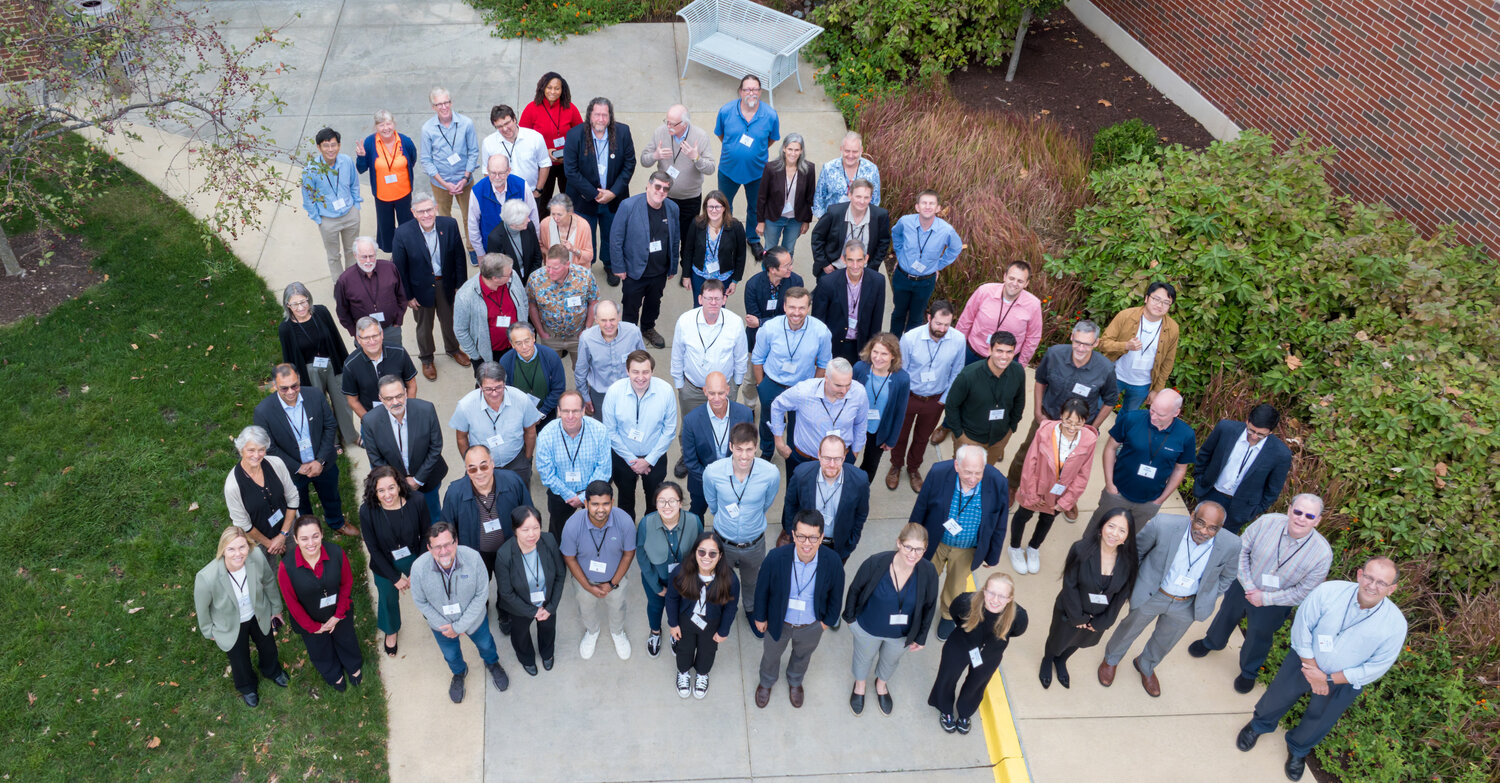An International Summit on a Computational System for Frontier Earth System Science and Climate Simulation and Projection
Illinois Climate Computer Summit participants, Sept 29, 2024.
Ruby Leung and Mark Taylor attended the International Summit on a Computational System for Frontier Earth System Science and Climate Simulation & Projection at University of Illinois Urbana-Champaign from September 29 through October 2, 2024. Sponsored by a grant from the National Science Foundation, the summit brought together thought leaders from academia, industry, government and non-profit organizations to examine the need for a computational system and modeling framework that allows Earth System Models (ESMs) to run at kilometer resolution globally. The summit also addressed how a globally engaged community framework could be structured to meet this need.
During the past few decades, grid spacings in operational numerical weather prediction (NWP) models have become ever finer owing to dramatic increases in computational capabilities. Such operational models can now marginally resolve deep convective storms and their larger aggregates. Research initiated in the late 1980s demonstrated the practicability of numerically predicting high-impact local weather, such as individual thunderstorms, and subsequent studies showed that major advances would be realized when moving from NWP model grid spacings on the order of tens of kilometers down to those on the order of one kilometer.
Although the resolution of ESMs likewise has improved, most models used for long-term climate projections still operate at grid spacings of 50-100 km or larger. Consequently, they are unable to explicitly resolve clouds and precipitation, and only marginally resolve hurricanes, orography, coastlines, and land-surface heterogeneities. Modifying existing ESMs to run at fine resolutions is an enormous task, requiring significant modifications to physical parameterizations and numerical solution techniques, calibration of numerous variable parameters, and evaluation of solutions against observations. It is increasingly recognized that fine-resolution ESMs are not a “silver bullet” and should be utilized in tandem with AI/ML tools to achieve desired goals. Parallel with ongoing efforts by modeling centers to develop and improve kilometer-scale ESMs, efforts on the computational front are needed to support large ensembles of kilometer-scale global climate simulations to help answer key scientific questions, to train ML-based models of the climate system and to support local and regional decision-making regarding climate change.
To guide the organization of the summit, four pre-summit intensives were organized around the topics of Earth System Models, requirements for system architecture and operational software, artificial intelligence, and local and regional risk decision making. During the three-day summit, ~150 climate scientists and modelers, computational and data scientists, and practitioners discussed the needs for fine-scale climate information. The summit was organized around four principal themes, each containing several questions and issues:
- ESMs Today and Tomorrow and the Many Roles to be Played by AI
- Contours of a Special-Purpose System and Other Options
- Planning and Executing a Major International Project
- Expected Benefits
The summit was organized by an international team of experts, including Francina Dominguez (University of Illinois Urbana-Champaign), Kelvin K. Droegemeier (University of Illinois Urbana-Champaign), Barb Helland (U.S. Department of Energy, Retired), Ruby Leung (Pacific Northwest National Laboratory), Maria Molina (University of Maryland College Park), Andreas Prein (National Center for Atmospheric Research), Dan Reed (University of Utah), John Shalf (Lawrence Berkeley National Laboratory), Bjorn Stevens (Max Planck Institute for Meteorology) and John Towns (University of Illinois Urbana-Champaign). For more information about the summit, please visit the summit webpage.
This article is a part of the E3SM “Floating Points” Newsletter, to read the full Newsletter check:



